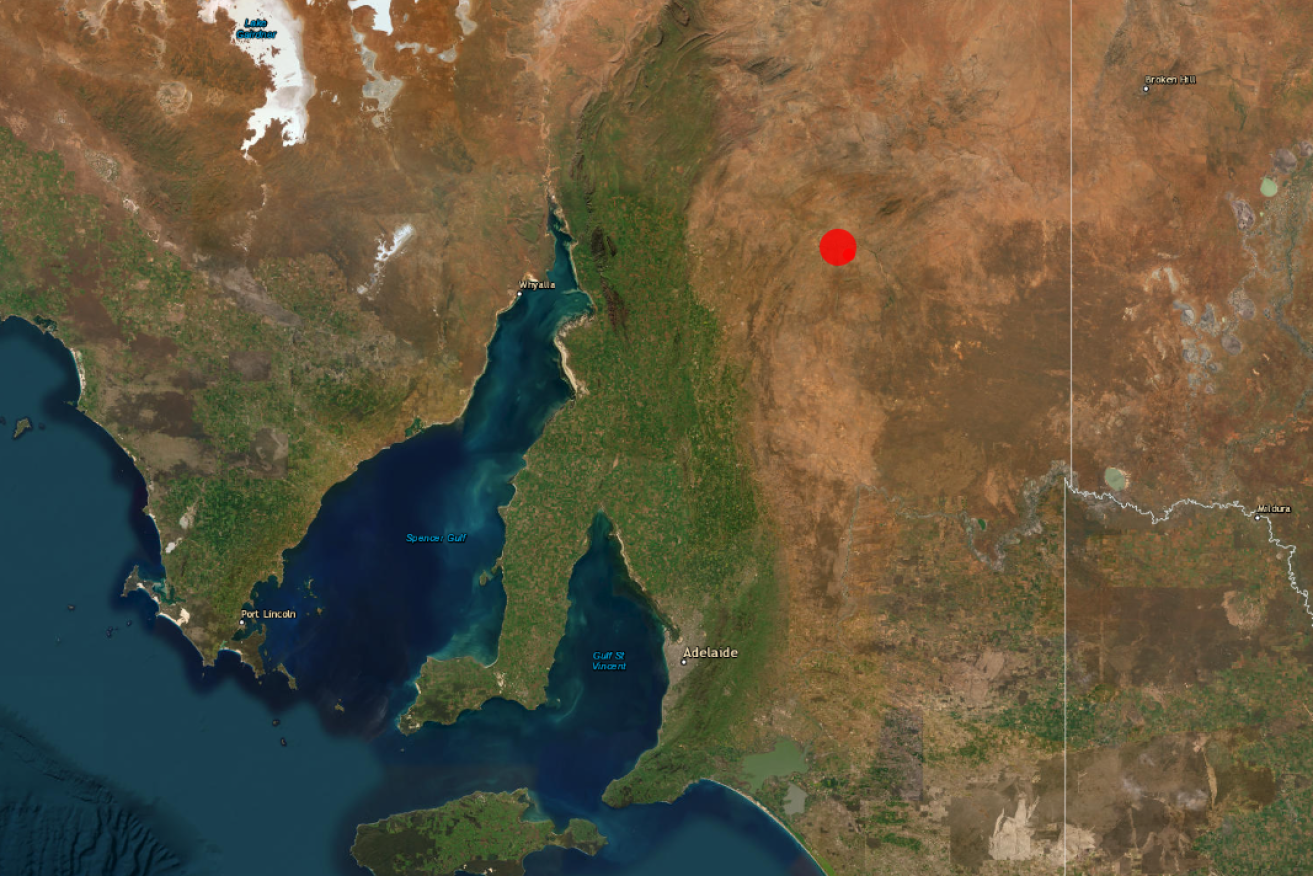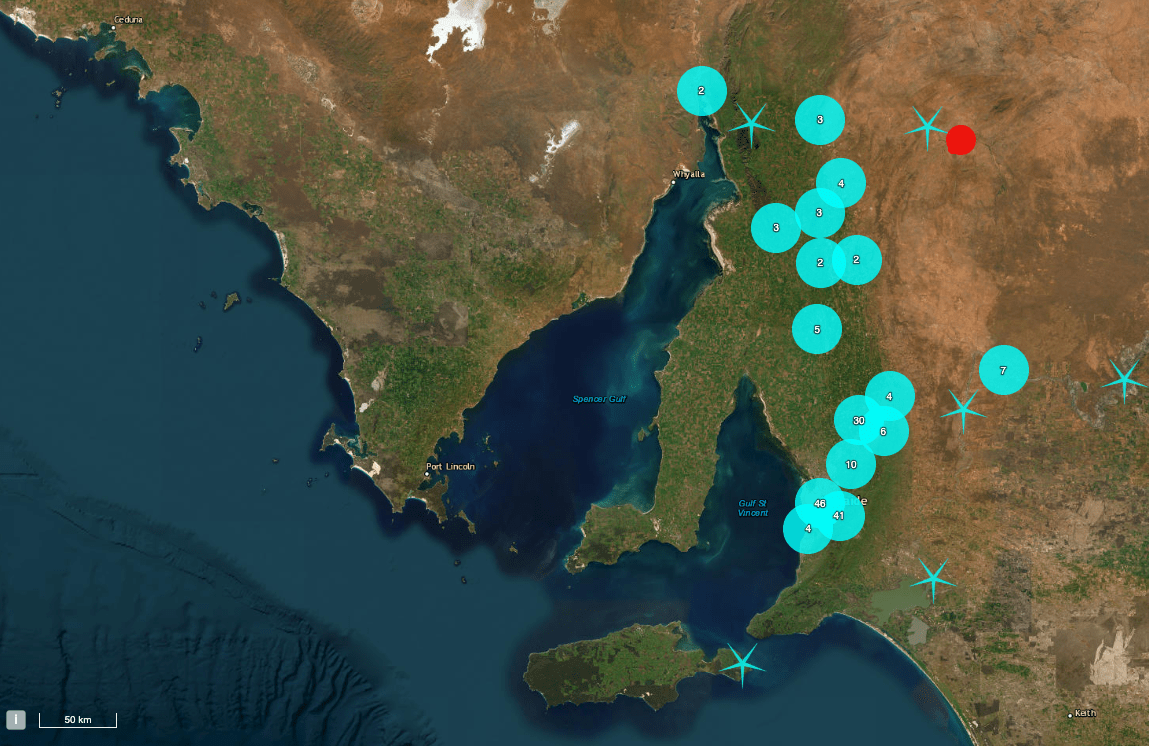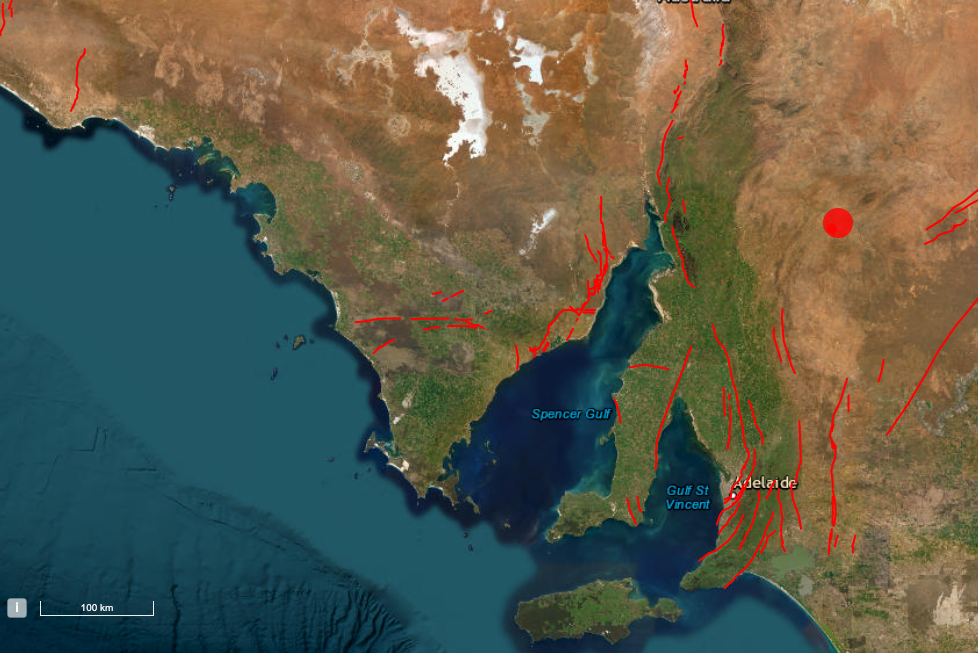Biggest quake for years hits Flinders Ranges
A 4.7 magnitude earthquake – South Australia’s biggest in nine years – has shaken the Flinders Ranges and has been felt as far away as Kangaroo Island.


A red dot indicating the location of the earthquake in the Flinders Ranges today. Map: Geoscience Australia
The earthquake occurred at 9.53am today just south of Yunta, 275km northeast of Adelaide in the remote Flinders Ranges.
A 2.6 magnitude aftershock was recorded in the same area at 10.43am.
Geoscience Australia said the 4.7 magnitude quake is the largest to be recorded in South Australia since 2013 when a 5.4 magnitude tremor shook Ernabella in the APY Lands.
More than 170 people across South Australia have reported to Geoscience Australia that they felt today’s earthquake.
This is the largest quake in SA in the last 9 years.
— Geoscience Australia (@GeoscienceAus) March 23, 2023
“It was felt quite widely, all the way up from Port Augusta down to Adelaide and even down to Kangaroo Island,” Geoscience Australia senior duty seismologist Hugh Glanville said.
“It’s not the largest we’ve had in South in the last 10 years, that would be a magnitude 5.4 up at Ernabella near the Northern Territory border.
“But this equals the largest we’ve had in this region for the last decade.”

A location map of people to have reported feeling today’s earthquake. Image: Geoscience Australia
Glanville said that in the last 10 years there have been 55 earthquakes within 100km of the epicentre of today’s tremor.
“The Flinders Ranges are actually quite seismically active, so we have a lot of earthquakes in the Flinders Ranges because of an active zone of deformation where it’s built the mountains and hills in the Ranges,” he said.
“They’re averaging in this area around five to six earthquakes a year.”
Geoscience Australia initially recorded the earthquake at a magnitude of 4.8 but downgraded that to 4.7.

A map of faultlines around the epicentre of today’s earthquake. Image: Geoscience Australia
“It’s a moderate earthquake, you can expect minor damage starting around this magnitude,” Glanville said.
“Above magnitude 4.5 you can start to get – if you’re very close to the epicentre – things like plaster cracking or things being knocked off shelves.
“You don’t expect major damage from an earthquake this size… generally we only expect minor damage from an earthquake this size.”




